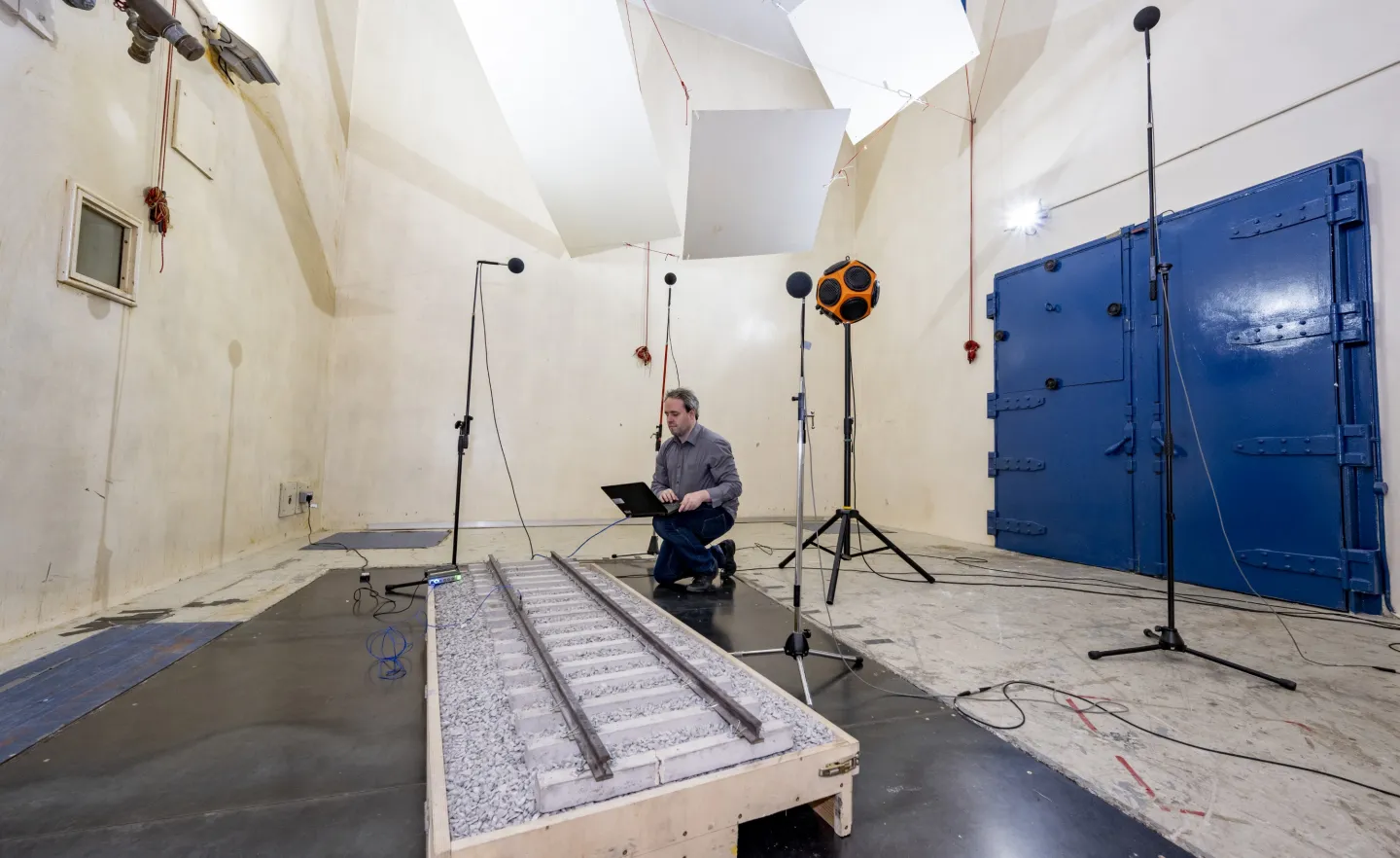Description:
A reverberation room is designed so that the walls, floor and ceiling reflect almost all the sound back into the room. It is the opposite of an anechoic chamber and is used for different types of acoustical testing. We have both a large and a small chamber. These can be used individually or combined to form a transmission suite.
When a machine or other noise source is placed inside a reverberation chamber, the sound is reflected many times. This produces a non-directional or ‘diffuse’ sound field. We can then calculate the sound power emitted from the machine by measuring the sound level in the chamber. We also take into account the characteristics of the room such as its volume, surface area and reverberation time.
Unlike the sound pressure level produced by a machine or piece of equipment, the sound power level is a property of the machine and is independent of the test environment.
We use our reverberation rooms to measure the sound absorption of:
acoustic materials
wall panels or screens
acoustic tiles
hanging baffles
items of furniture for example theatre seats or office desks and chairs
We can also generate high-intensity diffuse noise fields for acoustic fatigue testing. For example, we test spacecraft and aircraft components. These components must be able to withstand high levels of noise without noise-induced vibration. This can cause wiring or circuit boards to fail.


